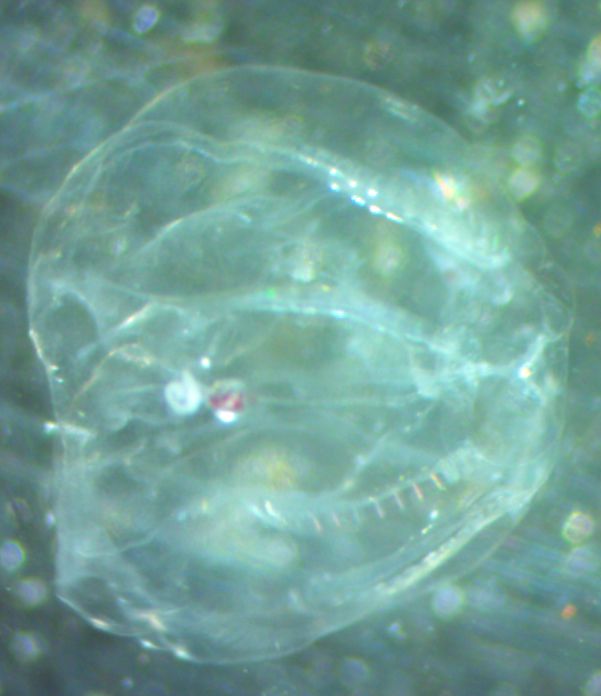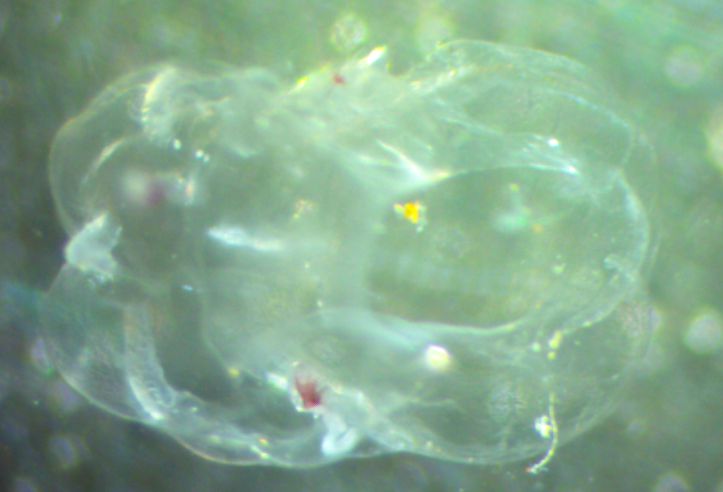Dryodora glandiformis (Mertens, 1833)Common name(s): |
|
| Synonyms: |  |
|
Class Tentaculata
Order Cydippida
Family Haeckeliidae
|
|
| Dryodora glandiformis, 3.5 mm diameter, found by Jamie Anderson Fields at night at the Sharpe Cove dock. The mouth is to the left. Note the red pigment in the tentacle sheath. The tentacles are retracted but cannot be fully retracted into the sheaths. | |
| (Photo by: Dave Cowles, July 2025) | |
Description: This small ctenophore has a solid body with two tentacles and no oral lobes. The tentacles have no side branches (tentillae) and emerge from short tentacle sheaths near the oral end of the animal. The tentacle sheaths sometimes hav red pigment, as in this individual. The mouth (actually a vestibule before the mouth itself) is large and can open very wide (photo). There are eight meridional canals, each of which runs in parallel to and just under one of the ctene rows. Rarely over 1 cm diameter in our area. Ctene rows are about 1/2 the length of the body.
How to Distinguish from Similar Species: The red tentacle sheaths are distinctive. Pleurobrachia bachei and Hormiphoraspp. have branches (tentillae) off their two main tentacles. Bolinopsis infundibulum has large oral lobes.
Geographical Range: Boreal, in both the Arctic and Antarctic, where they grow larger than here.
Depth Range: Pelagic
Habitat: Pelagic
Biology/Natural History: Feeds
on appendicularians
| Return to: | |||
| Main Page | Alphabetic Index | Systematic Index | Glossary |
References:
Dichotomous Keys:Kozloff, 1987, 1996
Carlton, 2007
General References:
Wrobel
and Mills, 1998
Scientific Articles:
Web sites:
General Notes and Observations: Locations, abundances, unusual behaviors:

The large, partly open mouth (or vestibule) can be seen open on the
right side of this photo. Photo by Dave Cowles, July 2025
Authors and Editors of Page:
Dave Cowles (2024): Created original page
CSS coding for page developed by Jonathan Cowles
Salish Sea Invertebrates web site provided courtesy of Walla
Walla University